Falls can turn an ordinary day into chaos in seconds. When you care for someone with dementia, you don’t just worry about slips, you worry about confusion, wandering, and keeping everyone safe.
This article will look at the different ways to reduce fall risks at home for dementia caregivers.
You can slash the risk without turning your home into a hospital. Let’s set up a safer space for your loved ones and still feels like home.
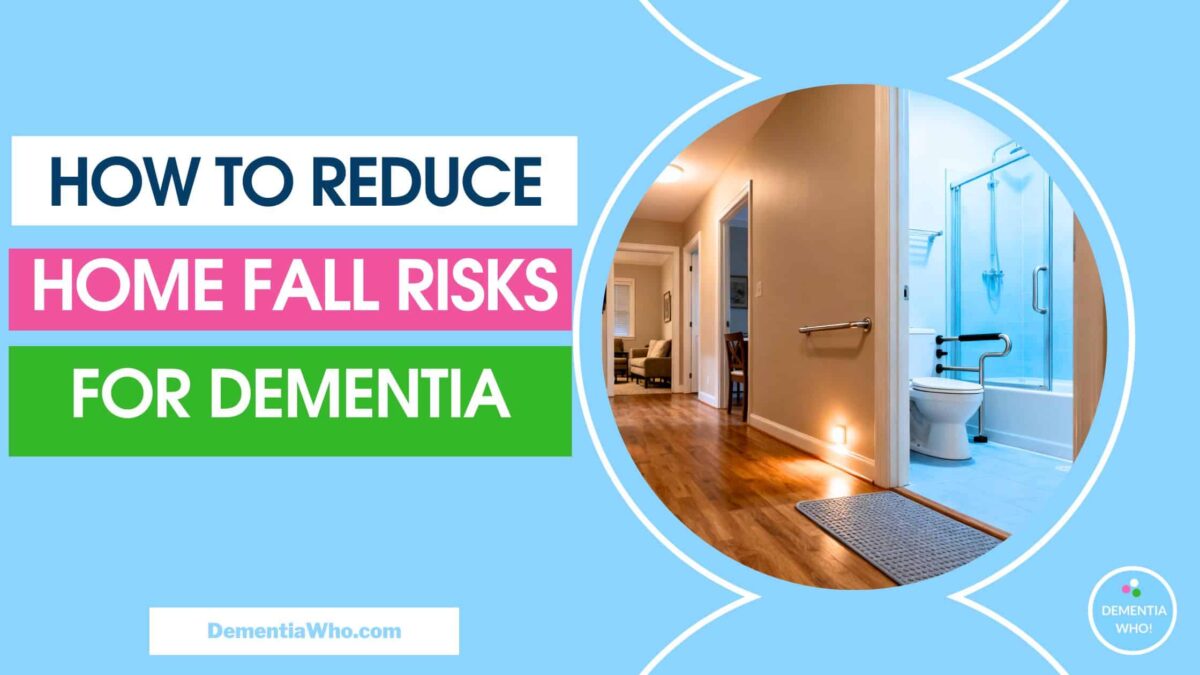
This post may contain affiliate links. If you buy through them, I may earn a small commission at no extra cost to you. See our Privacy Policy for details.
Understand Why Dementia Raises Fall Risks
Dementia doesn’t just affect memory, it messes with judgment, vision, balance, and reaction time. It changes how the brain processes contrast and depth. A rug edge can look like a step. Shadows can look like holes.
You’ll see things like misjudging distances, forgetting to use a walker, or trying to stand up too fast.
What helps?
Focus on predictable routines, simplified spaces, and cues that reduce mental load. If your loved one doesn’t need to guess where the bathroom is or which light to turn on, you already cut risk.
Make High-Risk Areas Safer (Start With Bathroom and Bedroom)
Bathrooms are fall traps. Wet tiles, shiny floors, and slippery mats make a dangerous mix. You don’t need a full renovation. Small tweaks can make any bathroom safer
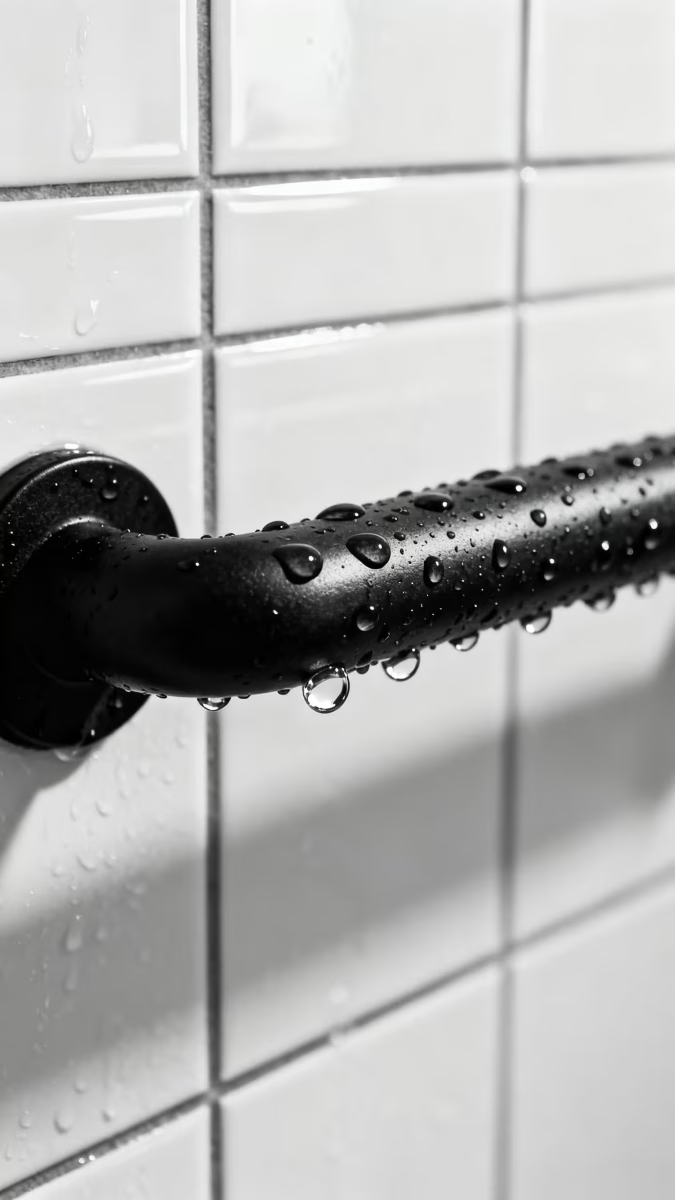
Bathroom Tweaks That Help
- Grab bars next to the toilet and in the shower. Choose contrasting colours so they’re easy to see.
- Non-slip mats inside and outside the shower. Throw away the fluffy bath rugs, they’ll slip when stepped on!
- Shower chair or bench plus a handheld shower head and somewhere that reachable for getting products. You can buy handy stick on shelving that can be placed at a suitable height.
- Raised toilet seat to reduce sit-to-stand strain. This was a god send for us, with someone who has knee issues and arthritis it can be really difficult to stand up, hand rails paired with toilet seats raiser make all the difference
- Nightlights that lead from bed to bathroom. Motion-activated lights work great.
- Signage – to help someone identify the right door (or we just left the bathroom door open)
Bedroom Setup for Safer Nights
- Bed height so feet can sit flat on the floor. Is the bed too high, can it be lowered or replaced. Or is too low and a struggle to get up or sit down without control? Bed rails can help as well using mattress toppers etc to raise the bed height slightly.
- Clear path to the door and bathroom. No cords, baskets, or clutter to cause a fall
- Sturdy bedside lamp or touch light. Make it obvious and easy. We used a simple touch light for getting up at night for the bathroom rather than struggling for the switch for the lamp
- Stable chair with arms for getting dressed. Avoid rolling or swivel chairs. You can also use them to help with standing if placed near the bed (better option is to use walking frames/walking sticks)
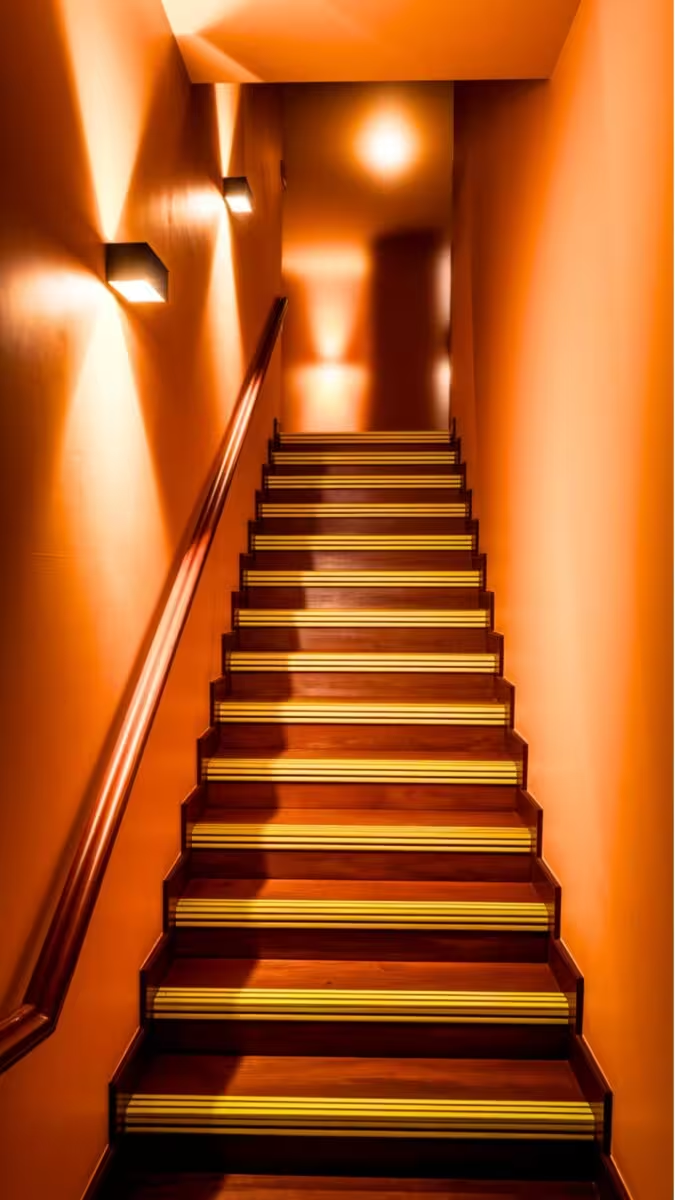
Lighting Makes a Bigger Difference
Poor lighting can turn normal floors into optical illusions. Dementia often changes depth perception, so shadows, glare, and shiny floors confuse the brain.
- Use warm, even lighting in hallways, stairs, kitchen, and bathroom. No dark corners.
- Install motion lights for night time trips.
- Reduce glare with matte bulbs and shades.
- Boost contrast between walls, floors, and furniture. Example: a dark handrail on a light wall.
Pro tip: Fix visual “tricks”
- Remove dark rugs, they can look like holes or moving objects.
- Use solid-colour, non-slip rugs only if you must. Better yet, use carpets and avoid small area rugs entirely.
- Mark the edge of stairs with high-contrast tape.
Declutter!
Clutter isn’t just messy, it steals your loved ones attention trying to avoid things to walk safely. So the less clutter that’s around the better their focus and safer their steps.
- Clear pathways to the kitchen, bathroom, and favorite chair. Make routes obvious.
- Tuck cords against walls and use cord covers. No spaghetti wires across the floor.
- Downsize furniture in tight spaces. Get rid of end tables, ottomans or in our case we replaced a coffee table that was way too big
- Secure pets during transfers or when your loved ones is moving around, a cat doing zoomies is an accident waiting to happen.
Footwear matters.
A lot.
- Closed-back, non-slip shoes with firm soles. House slippers with grip work if they stay on.
- Avoid socks alone, (if you must then get non slip socks), avoid flip-flops, and soft foam clogs that wobble.
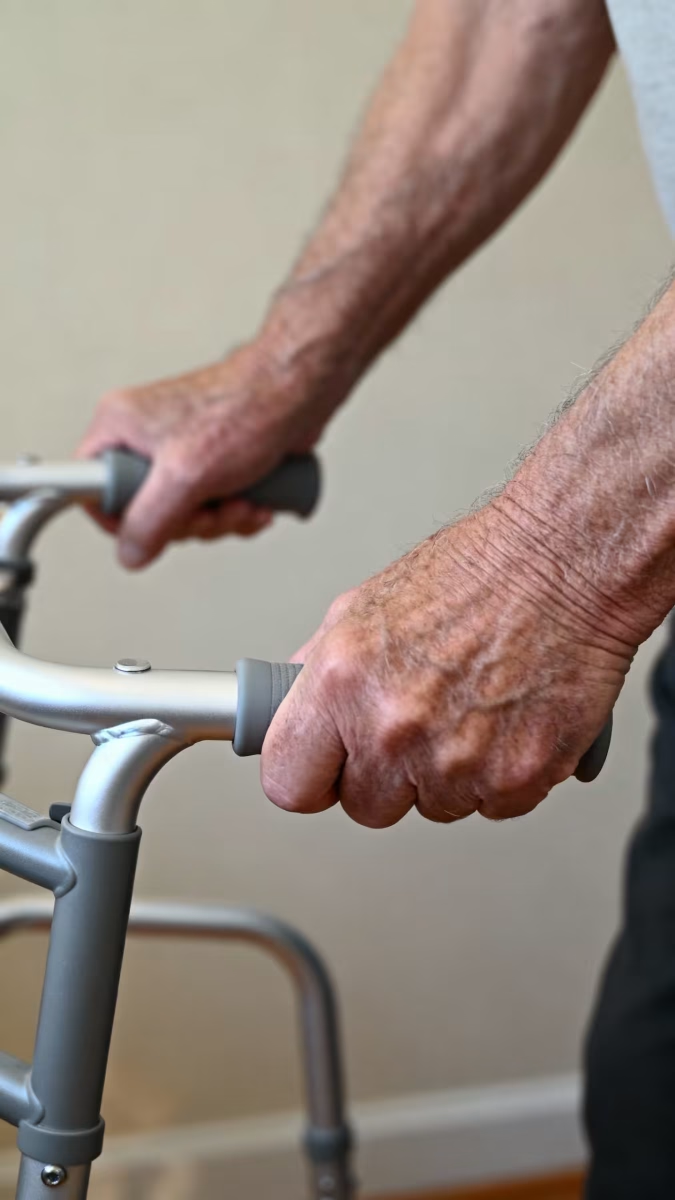
Rehab Moves and Routines That Reduce Falls
It’s tempting to let your loved one sit for most of the day to ‘keep them safe’. I did that early on. But less movement meant weaker legs, which meant more risk later.
You don’t need a full gym. You need consistency and a few smart moves.
Even 10 minutes daily helps, using mobility aids to help with steadiness.
- Chair stands: Sit, stand, sit—hold a sturdy surface. Builds leg power for transfers.
- Marching in place: Improves balance and coordination. Use the counter for support.
- Heel-toe raises: Strengthens ankles.Ten reps while holding a chair.
- Short walks after meals if safe. Routine movement beats long sedentary stretches.
Keep Things at the Right Height
After one near fall reaching into a low cupboard, I moved everyday items up where Mum could reach them easily.
Move Heavy Pans to the mid level shelves. Everyday items used regularly like favourite mug and bowl sat on the counter.
Chairs with firm arms – make it easier to get up
Adjust furniture height – I found that adjusting furniture heights was easier than buying anything new. Sometimes a cushion or a small chair leg risers did the trick.
Work with a health pro
A physical or occupational therapist can customise a gait and balance program and suggest the right mobility aid. This is one of the best investments of your time that you can make.
Ask for a home safety evaluation too, they can spot hazards we all miss.
Smart Use of Mobility Aids (Not Dust Collectors)
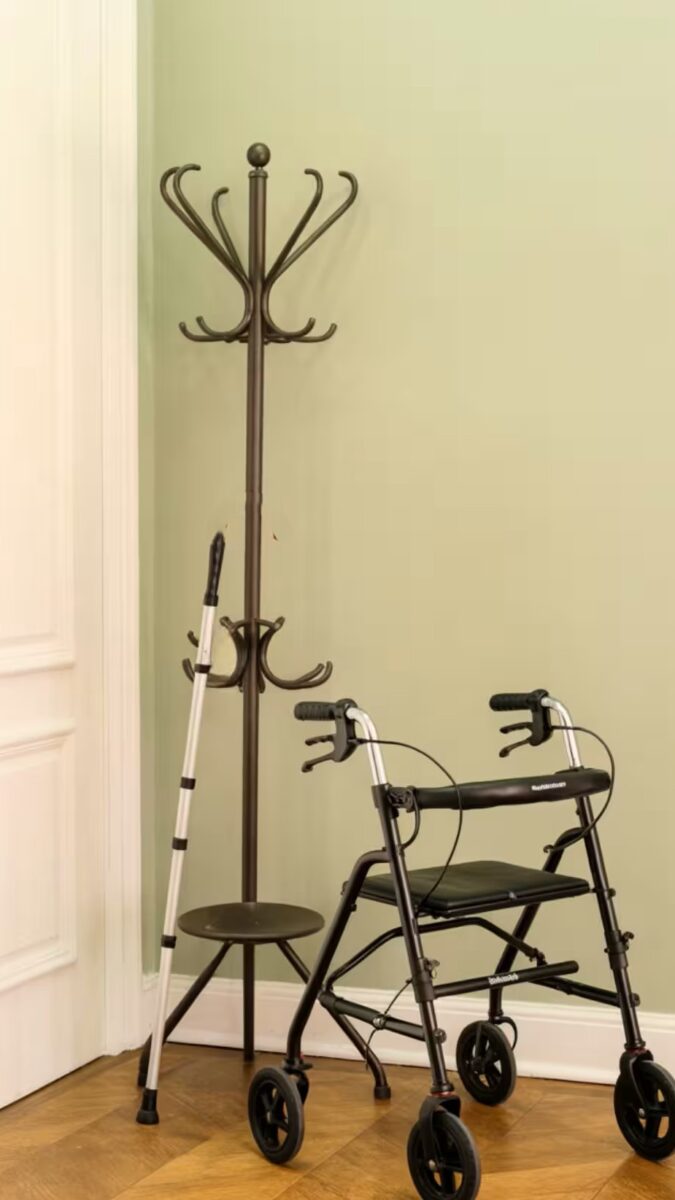
Tools help only if your loved one uses them, and uses them right. My mum used a walking stick and resisted the move to using two sticks and was even worse when a walker was introduced. It took time for her get used to the idea that she needed it for safety, but once she saw her mobility improved, and her independence she used them!
- Keep Mobility Aids in Sight – out of sight means its forgotten, but don’t place it where it becomes a tripping hazard either!
- Pick the right device: Walking stick/Cane for mild support, walker for more stability. Four-point canes beat single-tip for steadiness.
- Adjust height: Handle at wrist crease with arms at your sides. Elbows should bend slightly when holding the device.
- Label or colour-code the device so it stands out visually. Add a name tag to reduce “that’s not mine” moments.
- Park it smart: Keep walkers near the bed and favorite chair. If it’s out of reach, it won’t help.
- Use a transfer belt when assisting. Saves your back and improves control.
When to consider a wheelchair
If falls happen despite a walker or your loved one refuses to use it consistently, talk to a occupational therapist or your doctor to evaluate the situation and suggest solutions. Don’t just cope on your own!
They can do a falls risk assessment, refer to a falls clinic (really good for strengthening, identifying hazards and learning how to get up safely from a fall!)
A transport wheelchair can reduce risk during outings or long distances without removing independence at home. And if things are particularly difficult at night, consider getting a commode, it saved us when mum was falling regularly.
Medication, Hydration, and the “Slow Stand” Rule
Med side effects play a huge role in falls. So do dehydration and rushing. So watch out for the side effects listed on medications especially if you’re changing dosage or medication type.
- Review meds with a pharmacist or doctor: sedatives, sleep aids, blood pressure meds, and some antidepressants can cause dizziness.
- Hydrate: Dehydration causes confusion and low blood pressure. Keep water bottles, mugs or jugs at easy reach. Use adaptive tools like two handed mugs to make it easier to drink.
- Slow Stand Rule: It’s safer to take things slowly, so try this sit at edge of bed, pause, take 3 deep breaths, plant feet, then stand. Count out loud if it helps.
- Bathroom timing: Frequent urination at night? Consider scheduled bathroom trips before bed and once overnight to prevent rushing. This was great especially for someone who may be suffering from incontinence issues.
Wandering and Night time Safety
Wandering increases fall risk, especially at night. You can reduce it without turning your home into Fort Knox.
- Try Door alarms or chimes on bedroom and exit doors.
- Pressure sensitive floor mats when someone gets out of bed
- Motion lights in hallways and bathrooms, plus glow tape on key pathways.
- Remove visual cues for exits at night (e.g., cover glass panes that show the outdoors, curtains over doorways).
- Comfort routines: Try an evening routine of a warm drink, bathroom trip, light reading, gentle music to help promote a restful night sleep.
Set up a “safe zone”
Create a small area with a comfy chair, blanket, water, tissues, and a favorite activity. If they wake up restless, guide them here instead of letting them roam the whole house. You can sit with your loved one then and reassure them gently.
What To Do After a Fall (Because It Happens)
Even with perfect prep, falls still happen.
Have a plan.
- Stay calm. Check for pain, bleeding, or deformities. Ask what hurts.
- Don’t pull them up. If no major injury, guide them to roll to their side, onto hands and knees, then to a chair using a sturdy surface. If you can afford it, invest in a lifting cushion because trust me they’ll be days when they can’t get up and you aren’t able to help.
- Call for help especially if they’ve hit their head, lost consciousness (even for a moment), new confusion, severe pain, or blood thinners involved (this is critical!).
- Once the dust settles and hopefully everyone is ok, do a quick “why” review: Lighting? Shoes? Rushing? Then fix the issue so it doesn’t happen again.
FAQ’s
How can I tell if my loved one is at risk of falling?
Look for signs like unsteady walking, hesitation when standing, or avoiding certain rooms or stairs.
How do I convince my loved one to use a walker?
Frame it as a tool that keeps them independent, not as a “you’re weak” label. Keep it within arm’s reach, pick a style they like, and practice together during good moments. Praise every time they use it, positive reinforcement works better than nagging.
How do I make stairs safer?
Add sturdy handrails on both sides, mark edges with contrast tape, and keep steps well lit.
What’s the best flooring for reducing falls?
Low-pile carpet or non-gloss vinyl works well. Try to avoid busy designs on flooring that can cause confusion or dark colours that can look like holes.
Avoid slippery tile and high-gloss wood. Whatever you choose, keep it consistent, thresholds and sudden changes in pattern can trip people up.
Should I get a medical alert device?
If your loved one spends time alone, it’s smart. Choose one with fall detection and simple buttons. Investing in one with a call out feature is also worth it. Some local councils offer the service for an annual fee. I used one when I was working and mum had become prone to falls.
Some watches look normal and work well, less stigma, more discreet as another option.
How often should I reassess the home?
Every few months, or sooner if your loved one’s mobility changes. Small changes can make a big difference.
Are grab rails worth installing?
Yes, especially near toilets, showers, and steps (both indoor and outdoor). They give stability and reduce hesitation.
Do vision changes from dementia affect falls?
Yes. Even with perfect prescription glasses, the brain can misinterpret depth, contrast, and motion.
That’s why contrast, lighting, and clutter reduction make such a big difference.
Conclusion
You can’t bubble-wrap the world, but you can make home safer. Start with lighting, decluttering, and bathroom safety, then add steady routines and the right gear. Tweak as you go, to reduce fall risks at home for dementia. Celebrate small wins, and remember: a safer home mean less falls and a much better experience for you all because going to A&E at night is never great!
